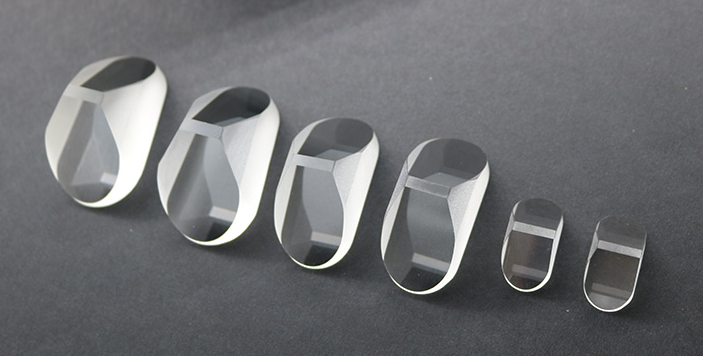7. Prism type: roof prism, Porro prism


8. Prism material
There are two types of prisms commonly used in telescopes: bak-4 and bk-7 prisms. BAK-4 type uses barium-containing crown glass, and BK-7 type uses silicate glass. BAK4 and BK7 are two different grades of optical glass. BAK4 has a high refractive index, and BAK-4 type glass is finer (higher density). It can eliminate internal light divergence and has a clearer image than BK-7 glass. The price of telescopes produced with BAK-4 prisms is higher than that of BK-7 prisms. Both military telescopes and some fine civilian mirrors use BAK4 prisms. But it does not have much impact on daily use.
9. Lens coating
When light passes through the optical glass lens of the telescope, part of the light is reflected on the front and rear air surfaces. The amount of reflected light is related to the refractive index of the lens. If there are six lenses, 50% or more of the light will be reflected. reflection. A layer of anti-reflection and anti-reflection coating is plated on the mirror surface, which can reduce stray glare and ghosting, increase light transmittance, and improve image quality and brightness.

10. Exit pupil diameter
The diameter of the telescope divided by the multiple is called the exit pupil diameter of the telescope. This value is generally not marked on the telescope, but it can be easily calculated. At the same time, it can also be directly measured. Point the telescope eyepiece at yourself, the objective lens is at the bright place, and the eyepiece is a certain distance away from you. At this time, you can see a bright round spot. The diameter of the round spot is the exit pupil diameter of the telescope. The rounded edges indicate that the prism is not good or not big enough. The diameter of the exit pupil of the telescope directly determines the surface brightness of the object seen by the telescope. The larger the exit pupil diameter, the higher the brightness. But when the exit pupil diameter is larger than the human eye pupil diameter, some light does not enter the human eye and is wasted, and the effective aperture of the telescope becomes smaller. The pupil size of the human eye is 2-3mm in the sun, and can reach about 7mm in the dark, and it varies from person to person and becomes smaller with age. On the other hand, the exit pupil diameter also has a certain impact on the comfort of observation. When the exit pupil is large, the pupil will not easily deviate from the exit pupil beam when the pupil is shaking or when the eyeball rotates, so it will be more comfortable. Theoretically, the diameter of the exit pupil of the telescope should not be less than 4mm, preferably 5mm. That is, the diameter of 42mm, and the multiple should not exceed 10 times.

11. Exit pupil distance
The exit pupil distance is the distance from the exit pupil to the vertex of the last surface of the eyepiece near the human eye. The exit pupil distance greater than 16 mm is often called the long exit pupil distance, which is convenient for observation with glasses. A telescope with a long exit pupil distance (generally considered to be around 22mm is the best) is very helpful for the comfort of the observer, especially the observer wearing eyes. When designing a telescope system, it is necessary to provide comfortable observation conditions for the eyes. The distance between the exit pupil and the last surface of the eyepiece needs to be considered, which is called the lens eye distance. When using the telescope, the eye pupil is at the position of the exit pupil. In order not to collide with the eyelashes, the eye distance of the mirror should not be less than 5mm. If the telescope is used under vibration, the eye distance of the mirror must be increased. The eye-to-eye distance of military telescopes shall not be less than 16mm, and the eye-to-eye distance of the telescopes with gas-proof surface is required to be longer.
12. Eye cup/eye mask type
Swivel-up eye mask/folding eye mask
Rotating the eye shield can gradually adjust the distance of the eye shield according to their needs. It is also very convenient for people who wear glasses. People with normal vision can raise the eye shield, and those who wear glasses do not need to raise the eye shield. Folding the eye mask: Friends who don’t wear glasses don’t need to fold them. Friends who wear glasses should fold down the eye mask when observing.


